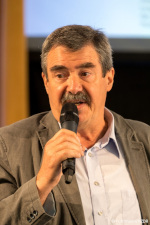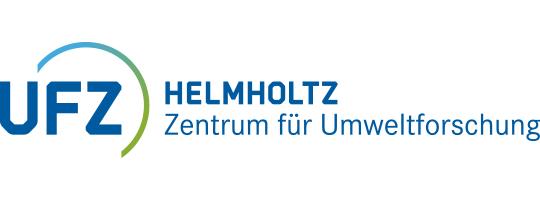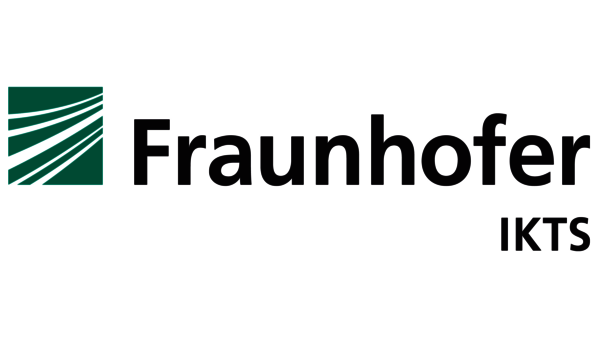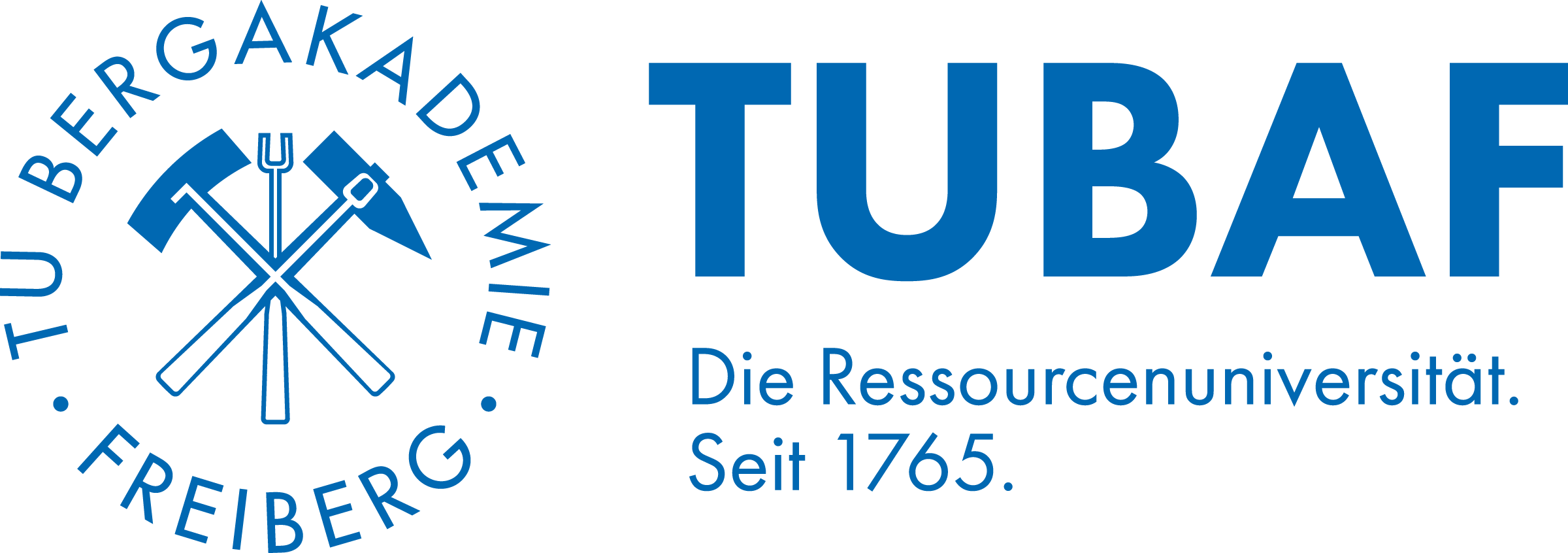Ehrenfriedersdorf
In the mine, which was operated until 1990, mainly tin ore was mined, the two silt heaps were created as a result of this tin ore extraction.
After the closure and preservation of the mine, the mining cavities were flooded. According to Hösel (1994), the mine water generally has a high As and F contamination.
The processing residues from the tin processing of the last mining period since 1942 have been stockpiled in the flushing heaps. The main ore minerals of the Ehrenfriedersdorf deposit are zinnstein (= cassiterite, SnO2), arsenopyrite (FeAsS) and löllingite (FeAs2) (Hösel, 1994).
Tailing 1 is located on the eastern slope of the Sauberg in a sheltered valley and extends from about 597 m a.s.l. up to 626 m a.s.l. The plateau area is approx. 6.8 ha and the slope areas approx. 1.4 ha, the volume is approx. 442,000 m3. Tailing 2 is at a height of approx. 626 m a.s.l. up to 660 m a.s.l. The plateau area is approx. 20.0 ha and the slope areas approx. 3.8 ha, the cubature is approx. 1.5 mil. m3. NN up to 626 m a.s.l. NN. The plateau area is approx. 6.8 ha and the embankment area approx. 1.4 ha, with a volume of approx. 442,000 m3. Tailing 2 is located at an altitude of approx. 626 m above sea level. NN up to 660 m a.s.l. NN. The plateau area is approx. 20.0 ha and the embankment area approx. 3.8 ha, with a cubic capacity of approx. 1.5 million m3.
History
The beginning and the end of mining in Ehrenfriedersdorf
The Ehrenfriedersdorf deposit is one of the best-known tin deposits in the Erzgebirge, with a mining history stretching back over 750 years. Tin and silver ore have been mined underground in the Ehrenfriedersdorf/Erzgebirge tin ore deposit since the 13th century. After production ceased for a time, operations were resumed in 1936 by Sachsenerz Bergwerk AG.
As a result of the resumption in 1940, a new processing facility and Tailing 1 were built in the area of the small crossing on the Sauberg eastern slope.
The processing plant was put into operation in 1942. Initially, only trump/ganger ore was processed. From the beginning of the 1960s onwards, iron ore was also processed.
The processing plant was dismantled as reparations after the end of the Second World War in 1945. Reconstruction and the resumption of ore extraction began in 1948. At the same time, the newly discovered Nordwest-Feld partial deposit was opened up. The year 1969 marked the end of injection into the flushing stockpile 1, as this had reached its capacity limit.
Instead, in 1969, flushing stockpile 2 went into operation, which was built above the flushing stockpile.
As a result of a completely unprofitable production, the VEB Bergbau- und Hüttenkombinat Freiberg stopped the ore mining on October 3, 1990 that ended the flushing into the Tailing 2 (Hösel, 1994).
After the end of mining in Ehrenfriedersdorf
The resulting company ZEE – Zinnerz Ehrenfriedersdorf GmbH was commissioned with the underground and surface storage and dismantling of the site following the closure of the Ehrenfriedersdorf mine. In the course of the underground preservation, overburden and shafts were preserved, backfills were installed, mining damage analyses were carried out and the mine buildings were flooded. In addition, the 2nd level of the clean mine was prepared as a visitor mine. The mine officially began operating as a visitor mine in 1995.
The two flushing dumps were covered with soil to reduce dust. As a result of remediation work, a cover up to 10 m thick has already been applied to flushing stockpile 2, while flushing stockpile 1 is only covered with a thin layer of soil.
Projects and activities at the Bielatal Tailing
- Project SMSB: “Extraction of strategic metals and minerals from Saxon mining tailing” as part of the funding measure “r³ -Innovative Technologies for Resource Efficiency – Strategic Metals and Minerals”, 2012 – 2016, project coordination: Helmholtz Institute Freiberg for Resource Technology
- Pilot: ,,Shipments of the tailing seepage water in the area Sauberg East field of tin ore Ehrenfriedersdorf GmbH” experiment: EcoConcept GmbH Chemnitz, academic support: TUBAF Freiberg, 2002
References (in German)
Grabner, W. (2012): Der historische Bergbau des Ehrenfriedersdorfer Bergreviers unterbesonderer Berücksichtigung von Aufbereitung und Verhüttung. Im Auftrag der Berggrabebrüderschaft Ehrenfriedersdorf, Pirna, 2012.
Greif, A.; Klemm, W.; Klemm, K. (2008): Influence of Arsenic from AnthropogenicLoaded Soils on the Mine Water Quality in theTin District Ehrenfriedersdorf, Erzgebirge(Germany). Eng. Life Sci., 2008, 8, No. 6, 631–640
Hösel, G.; Hoth, K.; Jung, D.; Leonhardt, G.; Mann, M.; Meyer, H.; Tägl, U. (1994): Das Zinnerz-Lagerstättengebiet Ehrenfriedersdorf/Erzgebirge, Bergbaumonographie, Bergbau in Sachsen Band 1; Hrsg: LFUG und Oberbergamt, Freiberg.
Klemm, W.; Greif, A. (2006): Abschlussbericht: Erarbeitung eines Verfahrens zur Behandlung von Gruben- und Haldensickerwässern. Technische Universität Bergakademie Freiberg, 2006.
Klemm, W.; Paul, M.; Jenk, U.; Meyer, J.; Greif, A.; Hartmann, J. (2015): Die Langzeitentwicklung der Belastung von Flutungswässern in Gruben des sächsischen Erzgebirges – Ergebnisse und Schlussfolgerungen. Conference Paper. Conference: Int. Bergbausymposium WISSYM_2015, Bad Schlema, 31.08.-03.09.2015, 87-98
Merkel, B.; Schaeben, H.; Wolkersdorfer, Ch.; Hasche-Berger, A. (2006): Behandlungstechnologien für bergbaubeeinflusste WässerGIS – Geowissenschaftliche Anwendungen und Entwicklungen. Technische Universität Bergakademie Freiberg, Institut für Geologie, Wissenschaftliche Mitteilungen, 2006.
Contact

Roland Stopp
+49 37341 4850-0
roland.stopp@erdbau-thalheim.de
See on the map
Ehrenfriedersdorf on Google Maps
Further links (German)
The waterways in Ehrenfriedersdorf
Mining monograph
Wikipedia
Treatment of contaminated sites in Saxony
BMBF final report
Objects of investigation
- Drilling fluid
- Leachate-/ Mine water
Pollutants
Resources
Projects
GeRohTrans
Development sites:
IAA Bielatal
Term: From 01.01.2024 to 31.12.2025
Social integration in raw materials research in the Ore Mountains: Transdisciplinary cooperation and ...
Our lead partner:

TERZinn
Development sites:
Ehrenfriedersdorf
Term: From 01.04.2021 to 31.03.2024
Technology development and testing for sustainable water management and additive raw material extraction at the pilot location Zinnerzgrube Ehrenfriedersdorf
Our lead partner:

NIRUBIS
Development sites:
Ehrenfriedersdorf
Term: From 01.04.2021 to 31.03.2024
Sustainable In Situ Resource Assessment and Environmental Remediation Procedures for Mining Regions in Saxony...
Our lead partner: 
Social Works
Development sites:
Ehrenfriedersdorf
Freiberg - Davidschacht
Freiberg - Roter Graben
Muldenhütten
Term: 01.01.2020 to 31.10.2022
Analysis of decision-making structures and conflicts and development of a methodological toolkit for transdisciplinary...
Our lead partner: 
TERZINN II
Development sites:
Ehrenfriedersdorf
Duration: From 01.07.2023 to 31.12.2025
Sustainable development of the Ehrenfriedersdorf model site with new value chains based on purified...
Our lead partner:

VeharstGlass
Development sites:
Ehrenfriedersdorf
Freiberg - Davidschacht
Freiberg - Roter Graben
Muldenhütten
Duration: From 01.04.2023 to 31.12.2025
Our lead partner:
RepNEU
Development sites:
Ehrenfriedersdorf
Duration: From 01.04.2023 to 31.12.2025
Remining through fine particle processing of tin stockpiles from the Ore Mountains with innovative pNEUmatic...
Our lead partner:




